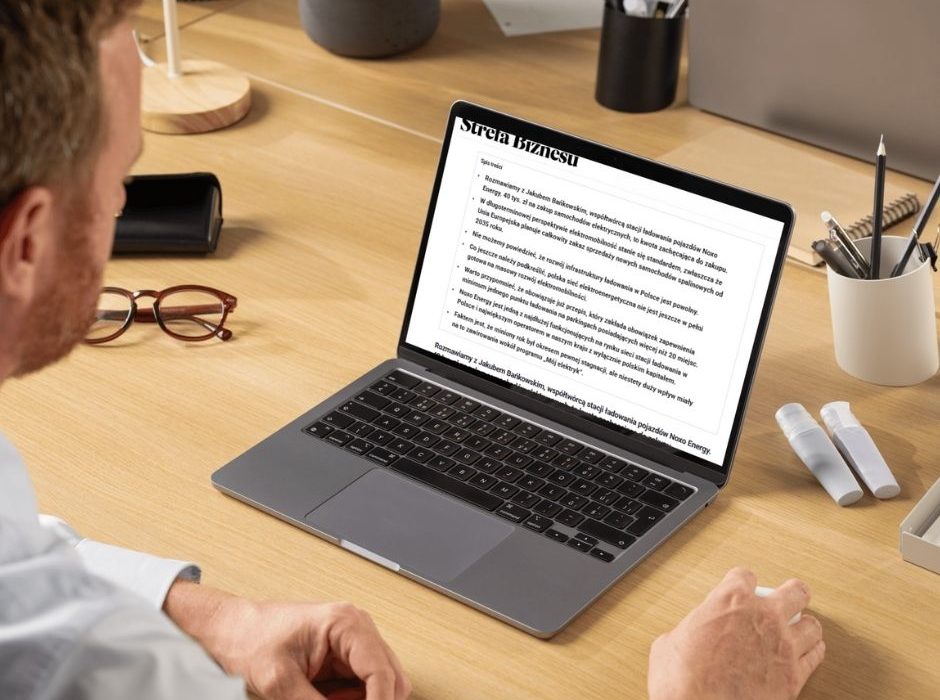Is Poland ready for the electric vehicle boom? Jakub Bańkowski for Strefa Biznesu
Electromobility in Poland is gaining momentum, and government subsidies for the purchase of electric vehicles could significantly accelerate this development. However, are the infrastructure and administrative procedures ready for such a change? Jakub Bańkowski, Board Member of NOXO ENERGY, shared his insights in an interview with Strefa Biznesu.
Electromobility in Poland is becoming increasingly accessible, and financial support programs are undoubtedly contributing to the growing number of electric vehicles on the roads. This is driving the development of the entire sector and moving us towards a more modern, eco-friendly mode of transportation.
What about the development of charging infrastructure?
The growing number of electric vehicles naturally supports the expansion of charging infrastructure. Increasing the availability of charging stations is a crucial element of the transformation, allowing drivers to use electric vehicles without hassle.
However, the development of infrastructure is not without its challenges. Procedures such as location approval and grid connection can take up to several months. Additionally, many areas face issues with insufficient connection capacity, significantly prolonging the investment process. NOXO ENERGY has over 100 locations contracted, waiting for high-capacity connections— the average time for this process is between 1.5 and 2 years.
The future of electromobility in Poland
The rise in popularity of electric vehicles is an inevitable change, but its pace depends on many factors. What steps can be taken to ensure that Poland keeps up with the leaders in electromobility?
The conversation with Jakub Bańkowski is available on Strefa Biznesu’s website: https://strefabiznesu.pl/czy-polska-jest-gotowa-na-boom-40-tys-zl-doplaty-na-nowe-samochody/ar/c3p2-27243429

